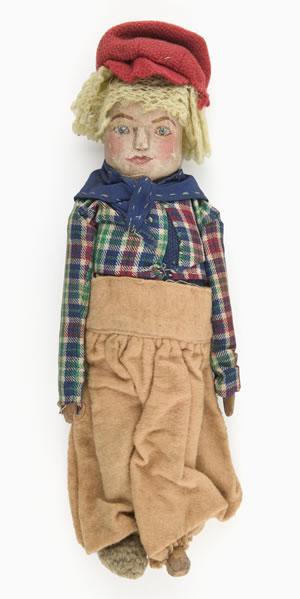Allies in adversity, Australia and the Dutch in the Pacific War: The "Dutch doll"
Chapei “Civilian Assembly Centre”, near Shanghai in China, was operated by the Japanese as an internment camp; it eventually held over 1,000 men, women, and children. While most of these internees were US citizens, there were also about 100 Dutch families, as well as many other nationalities.
Joyce Avasia and her family were living at Hankow (or Hankou) on the Yangtze River when Japanese troops arrived in 1941. As Eurasians, they were considered potentially hostile, and were confined to their home. In early 1943, the family was moved to Shanghai and interned in the camp at Chapei. Avasia, then aged 11, recalled the pains taken to make life as normal as possible for the children, especially around Christmas. Red Cross tins were fashioned into decorations, and their labels made into paperchains. As a Christmas gift in 1943, Joyce received “Hansie”, a traditional doll made by one of the Dutch internees.
Joyce Avasia later married and settled in Australia, bringing the treasured Hansie with her.

Hansie, somewhat worn, has lost one of his clogs, but the care and love which went into his construction are still evident.